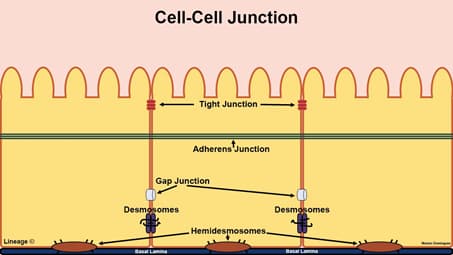Snapshot

- A 45-year-old woman presents to the physician’s office for a painful and blistering rash. She reports having a 1-month history of nonhealing ulcers in her mouth, which she previously attributed to stress. However, she reports new ulcers in her mouth and new easily-ruptured blisters on her skin. Approximately 6 weeks ago, she reported starting a new drug, captopril, for management of her hypertension. On physical exam, she has dozens of flaccid bullae and erosions on her trunk and extremities; she has 3 ulcers along her buccal mucosa. She is started on systemic steroids and captopril is discontinued.
Introduction

- Clinical definition
- Epidemiology
- demographics
- most common in
- those of Mediterranean or Jewish descent
- 40-60 years of age
- most common in
- demographics
- Pathogenesis
- autoantibodies (IgG) against desmoglein, a component of desmosome
- recall that desmosomes connect keratinocytes in the skin
- type II hypersensitivity reaction
- this disrupts keratinocyte adhesion and causes separation of epidermis
- autoantibodies (IgG) against desmoglein, a component of desmosome
- Associated conditions
- drug use
- thiols
- penicillamine
- benzylpenicillin
- captopril
- cephalosporin
- thiols
- thymoma
- myasthenia gravis
- systemic lupus erythematosus
- drug use
- Prognosis
- without treatment, prognosis is poor
- 75% mortality at 1 year
- with treatment, prognosis is improved
- without treatment, prognosis is poor
- 10% mortality at 1 year
Presentation

- Symptoms
- nonhealing and nonscarring ulcers persisting for at least 1 month
- extremely painful
- progressive development of blisters from mouth to the rest of the body
- nonhealing and nonscarring ulcers persisting for at least 1 month
- Physical exam
- flaccid bullae that are easily ruptured
- clear exudate
- superficial erosions of skin (ruptured bullae)
- often on scalp, face, and trunk
- mucosal ulcers
- positive Nikolsky sign
- flaccid bullae that are easily ruptured
- extension of blister or sloughing of skin with blunt pressure or lateral traction of skin
Studies
- Labs
- auto-antibodies detected in serum with enzyme-linked immunosorbent assay (ELISA)
- anti-desmoglein 3 (mucosal involvement)
- anti-desmoglein 1 (mucocutaneous involvement)
- auto-antibodies detected in serum with enzyme-linked immunosorbent assay (ELISA)
- Histology
- acantholysis
- separation of epidermal cells
- intraepidermal blister
- direct immunofluorescence
- acantholysis
- intercellular deposition of IgG or C3 in a net-like (reticular) pattern
Differential
Treatment
- Conservative
- wound care
- indications
- for all patients, to prevent secondary bacterial infection
- antiseptics
- anesthetic nebulizers for mucosal lesions
- potent topical steroids
- indications
- wound care
- Medical
- systemic steroids
- indications
- mainstay treatment
- drugs
- prednisolone
- indications
- steroid-sparing immunosuppressants
- indications
- may be used concurrently with steroids for flares refractory to steroids
- drugs
- azathioprine
- indications
- systemic steroids
- mycophenolate mofetil
Complications
- Skin and soft tissue bacterial infection of open lesions
- Risk of PV in newborn
- due to placental transfer of maternal autoantibodies


